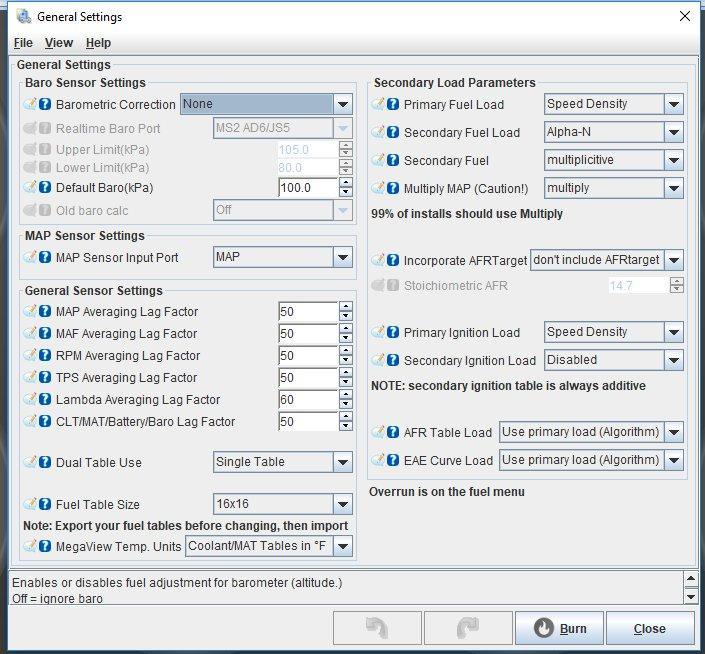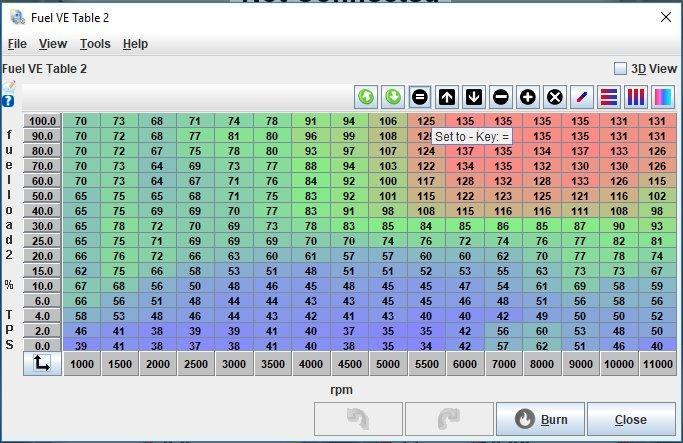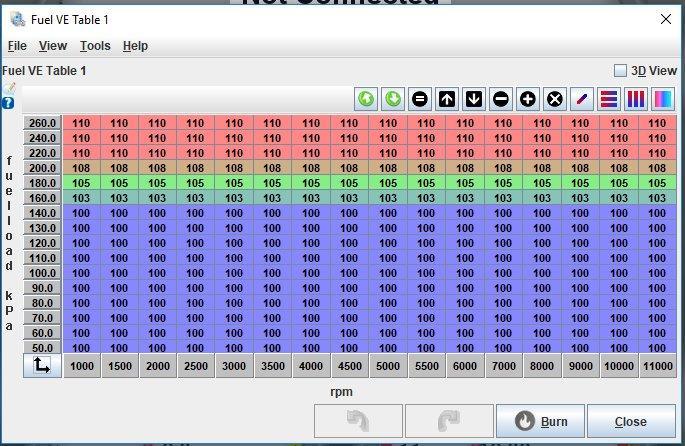

Arttu
Members-
Posts
907 -
Joined
-
Last visited
Content Type
Profiles
Forums
Events
Everything posted by Arttu
-
Like already said here an oil cooled engine probably easier for 200-250hp target. The EFE engine is really strong indeed but it has few weak spots that must be sorted out before you can squeeze out some real power. Clutch back plate and springs. Torque damper springs tend to flatten over time even on stock power and turbo torque can push them through thin stock back plate. So HD back plate and springs are must for any tuned engine. Crank. The crank is welded from the factory so it can withstand some power. Maybe around 200-300hp depending on use and your luck. But factory tolerances for crank throw out are a bit too loose and welds are quite light. So for serious use the crank must be disassembled, checked, assembled with tighter tolerances and welded properly. Oil system. Stock oil pressure is very low, below 0.5 bar which isn't enough for any turbo. 750 pump gears will help a little, maybe enough to keep ball bearing turbos alive. For plain bearing turbos you need construct some restriction arrangement to get required +2bars for the turbo. Stock pistons are forged so they can handle mild boosting just fine. For higher boost proper turbo pistons are highly recommended. Helical primary gears are yet another weak spot for high power but my guess is that they are fine below 300hp on street use. In theory if you really want just slightly over 200hp and the engine is in good condition it would be relatively easy. Just sort out the clutch, lower the compression, fit 750 pump gears and use ball bearing turbo. Should work. But then if you want to get more it means some serious work and spending (crank, pistons etc.). Alternatively just get a low mileage Bandit engine and fit stiffer clutch spring. I'm not an oil cooled expert but I think you don't even need to drop compression for 200hp and stock cast pistons should handle that if tuned properly. When going upwards the pistons are the first thing to replace. I think the rods start to be a risk around 300hp. And probably a lock-up clutch would be a good idea somewhere around 250-300hp (same goes with the EFE engine too). So there are pros and cons with both engines. But probably the easiest option is to get an oil cooled engine. And sell the EFE engine to me
-
https://www.wilbers-shop.de/index.php?cl=alist&cnid=f48a7a149f2d6091c01db3965cc26abc&fnc=showList&manufacturer=slm6e869254ef270fb7b5dbe84772262&year=1982&catname=f48a7a149f2d6091c01db3965cc26abc Back in the days they were somewhat cheaper than Öhlins. I don't know how much other brand name shocks cost today. Any way, Wilbers definitely isn't a budget choice but worth of the price if you are looking for high end shocks, IMO.
-
+1 I have had these on my GSX for over 10 years now and I have nothing bad to say about them.
-
Just to add one more reference point: Factory spec for GSX1100 oil pressure is 0.2-0.4 bar @ 3000 rpm, warm engine.
-
100 micron sounds ok for pre filter. I guess you have another finer filter on pressure side of the pump? 8mm hose is probably ok for intake side but I would use larger if possible. Also check carefully if there are any tight turns or fittings with smaller ID. I'm using 10mm hose with my Walbro GSL392. About a half meter hose with a filter and quick connect coupling. Seems to work fine. Fuel return shouldn't cause that kind problems. If there is too much restriction it will result higher and somewhat unstable fuel pressure but no pump cavitation.
-
New wastegate pipe looks much better. And glad to hear it works better as well! Fuel pump noise could be cavitation. How large is hose on pump intake side? And what kind filter, fine EFI filter or coarser pre-filter? Generally pumps don't like about restriction on intake side. Too much restriction will cause cavitation. And hotter the fuel is easier it happens.
-
Yep, unknown age and possible dirt in oil explain a lot. And continuous limiter bashing probably doesn't help either I was just thinking that maybe you have some underlying problem that caused the bearing failure. So it would be a good idea to rule out anything like that before throwing in new CHRA. As far as I have understood one weak spot in these ball bearing Garretts is plastic ball cage. If it gets overheated the bearings will be gone quickly. Key thing to prevent this is to ensure adequate oil flow. And not shut of the engine right after running the turbo glowing red.
-
Oops! That's a ball bearing Garrett, right? Any idea why it has given up? I have understood they should last almost forever if treated correctly.
-
Like already said, direction of WG connection is pretty important. 90 degree exit is far from optimal. It may work in some cases but generally it's asking for boost creep. Connection pipe size might be on small side as well, difficult to say from photos. 38mm gate should be fine. I would try to redo the connection, make it as smooth flowing as possible and large enough. A funny example relating to topic. I was recently tuning a drag racing Busa. We were tuning low boost areas, there was 0.5 bar spring in the gate and based on partial throttle pulls it was making pretty close to that boost. When doing the first full throttle pull the result was a bit surprising: over 500hp! As we were expecting something like 250hp we thought there was something wrong with dyno calibration. So checking calibration and new pull, still the same. Then I checked the datalog and found out that boost was creeping to 2 bars at top end. Doh! Reason was placement of the WG connection pipe, it was on back side of the collector and at 90 degree angle. Even when the wastegate was removed it still made 1.3 bar...
-
Proboost does them for a Blandit and charges $450... https://www.proboost.fi/other-turbo-parts
-
Quite many ECUs can do that nowadays. It needs an ethanol sensor connected to fuel system to get real time alcohol percentage for the ECU. I'm not sure but I would guess that those sensors read methanol as well as ethanol...
-
Well, theoretical air temp rise in compressor at that boost would be around 70C so 100C sounds pretty much what I would expect. Indeed, it's relatively high temp but not necessarily anything critical. Just nature of the beast (boosted engine without charge cooling). In practice blow through setups seem to result a bit lower temps. Apparently all the boost piping have some intercooling effect. Your setup is less favorable in this sense since the intake manifold is short and tucked between head and turbo. Water injection could be a good idea especially if you are planning to up the boost.
-
Nice! How high was that high intake temp? And how much boost?
-
Here is a settings file that you can use as an example. Probably not a good idea load in all the settings but you can export the tables and take a look rest of the settings to get an idea how to set them on yours. Then some explanation about most interesting parts. General settings: Even though the Alpha-N table is used as main tuning table I still set Speed Density as primary load. This doesn't matter for tuning since both tables are treated equally. But this way you get the MAP reading for "load" value which is needed to get some other functions like boost control working correctly. VE table 2, Alpha-N: Note division of throttle position rows. You need more rovs for low throttle openings to get get them tuned properly. VE table 1, Speed Density: This is used to just add some extra fuel for higher boost areas. Engine VE tends to increase when you get closer to peak efficiency area of the turbo so you need to compensate this if you use higher boost than what the Alpha-N table is originally tuned for.
-
With secondary load table it doesn't switch between tables but continuously blends values from both. How I have been doing this is to use the Alpha-N table as main tuning table and Speed Density table for finer corrections on different boost level. So for starters I put some quesstimated values on Alpha-N table and Speed Density table full of value 100 which means multiply by 1 so no correction. So at this point all tuning is done by Alpha-N table. Then I set wastegate to minimum boost and start tuning the Alpha-N table. Once I'm happy with tuning I turn up the boost and check if AFR is still ok. If not, I'll do required corrections to Speed Density table. Then more boost and repeat corrections and so on... If tuning for only one fixed boost level usually there isn't need to touch the Speed Density table at all. If needed I can post some screen shots of relevant settings.
-
It has been a while since I properly went through how the ITB mode actually works so I don't remember all the details. But I remember there was some catch why it wouldn't work properly on boosted engines. And I think also the code developers recommend it only for NA engines unless this has changed recently. So it might be possible to get it working but I wouldn't recommend trying it as your first tuning project Speed Density doesn't work too well either on ITB engines. Problem is poor resolution on partial throttle so typically you can only get it properly tuned for partial or full throttle but not both. My recommendation would be Alpha-N with that "multiply MAP" option. That has been working really well for me, on several engines. And if you want more tuning options for variable boost etc. you can add Speed Density as secondary load on top of it. Feel free to ask if you need more detailed instructions how to set this up.
-
All right, I checked briefly your log and settings. First of all, the MAP sensor readings look consistent so I think you are really having 200kPa here and there. So probably you should check your wastegate setup. Then some other notes: -You are running dangerously lean under boost. -I noticed that you have set fueling algorithm as ITB. As far as I know it isn't supposed to work properly on boosted engines. Feel free to correct me if this has changed recently.
-
Ok, if log says 200kPa and you have selected correct sensor in the settings then it's quite likely that you really have that much boost. 95kPa static and 60kPa idle sounds pretty much right. Typical idle values are between 60-75kPa with individual TBs. I'll try to find time to take a look on your log, hopefully later today.
-
Yep, sounds unlikely that you would got over 200kPa at that point. But not completely impossible depending your turbo sizing. But it's slightly moot to keep guessing about this Just check the datalog, most likely it can tell what's going on there. My wild guess is that you are losing crank trigger sync at that point. Check "sync loss count" and "sync loss reason" values from log for that one.
-
Not exactly true. There are 9 and 10 friction plate versions of the clutch. And plates on the 10 plate version are thinner. It's still slightly unclear for me which engines have been using which version. I know that my '83 1100E had that 10 plate version originally and these plate sets are usually sold as "Katana" plates. Older E engines and all EF/EFE engines seem to have the 9 plate version. Maybe. Go figure... However, these plate sets are interchangeable so you should be able to use both of them on any clutch basket. Naturally with correct amount of steel plates.
-
Congrats! 150 degrees C or F? 150C sounds quite high indeed. Although the engine gets pretty hot quickly when run without air flow. Are you sure that your temp sensor is accurately calibrated for that temp range? If you have done calibration for lower temps then there might be some substantial error on hot end.
-
Yep, looks ok for starting point. For comparison here is one that I made some time ago. Low comp 1168cc GSX-R with intercooler. Started with stock ignition curve that I found somewhere, added a little to vacuum areas and took off something from boost areas. The boost area is optimized on dyno up to 180kPa. Everything else is still that original guesstimate but it was working ok.
-
Advance numbers at high rpm and boost looks quite ok for me. But like Gixer1460 said you should have more advance at mid rpm. Typically advance stays quite flat from 3000-4000rpm upwards. Then about placing the RPM/MAP bins. I would place the lowest RPM column just below the idle rpm, like 1000rpm and next one somewhat above idle, like 1400-1500rpm. This allows you to play with advance around idle to get idle more stable. For the rest of rpm columns I would try to get a bit more resolution between idle and 3000-4000rpm where advance changes quickly. Everything above that can have more coarse spacing. For MAP you probably won't see figures below 60kPa anywhere else than on coasting. So I would have lowest row at 40-50kPa and use freed up rows for better resolution at upper range.
-
Well, full installation can be quite straightforward as well if there is some proven setup that you can copy. I can probably provide something like that for air cooled GS/GSX engines and oil cooled GSX-R/Bandit engines. If you like. But like you said, if you have to figure out everything by your self then using existing ignition system can simplify things a lot. I can help you with your project if needed. Give some advice or provide pretty much full installation set or anything in between Just drop me a PM and tell a bit more about your plans. Let's see then how to proceed.
-
I guess you have checked Brutefoce's build thread? That's pretty much what I would currently recommend as "sensible" setup for oil cooled engines. If you are planning for turbo on later phase then it's probably better to build the EFI system for it form the beginning as it doesn't increase cost much if at all. Unless you are aiming for some stupid high power (++400hp) with turbo. Feel free to ask if you have any questions. On this topic or privately. I'm sorry but I prefer not to try write an universal guide for EFI installation here. Not because I would like to hide any information but because I'm too lazy To make it really universal it would be a full book and as shorter version it would be probably misleading for half of the readers that want something else than what I had thought.




